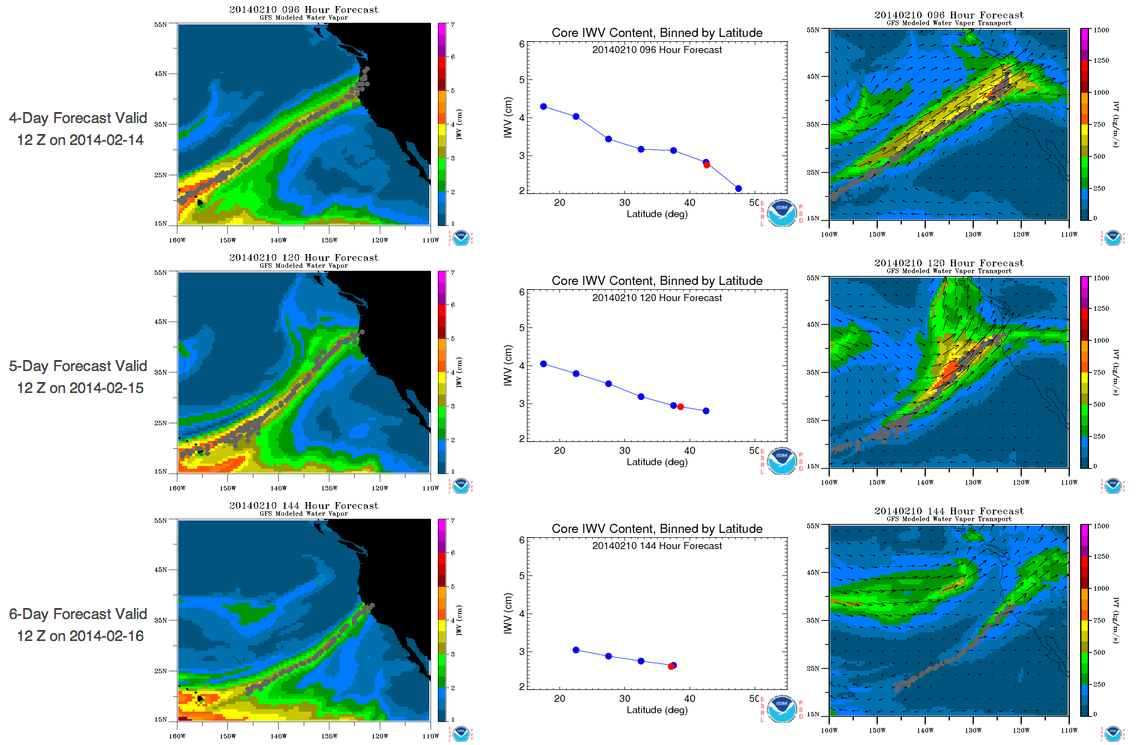Storm hits California coast as HMT researchers kick off atmospheric river study
February 10, 2014
This past weekend, an intense storm caused by an atmospheric river hit the California coast bringing much-needed rain and snow to the northern part of the state. HMT researchers from NOAA's Earth System Research Laboratory and collaborators from Scripps Institute of Oceanography kicked off a study on atmospheric rivers, releasing 52 dropsondes over the Pacific Ocean during two successful research flights on Friday and Saturday.
More than five feet of snow fell in the Sierra Nevada Mountains, and as much as 12 inches of rain fell at lower elevations. The Russian River, north of San Francisco, went from a trickle to flowing more than 9,000 cubic feet per second within a 24 hour period. Forecasters anticipate another atmospheric river, focusing more on the Oregon and Washington coasts, will hit later this week.
Contact: Allen White



